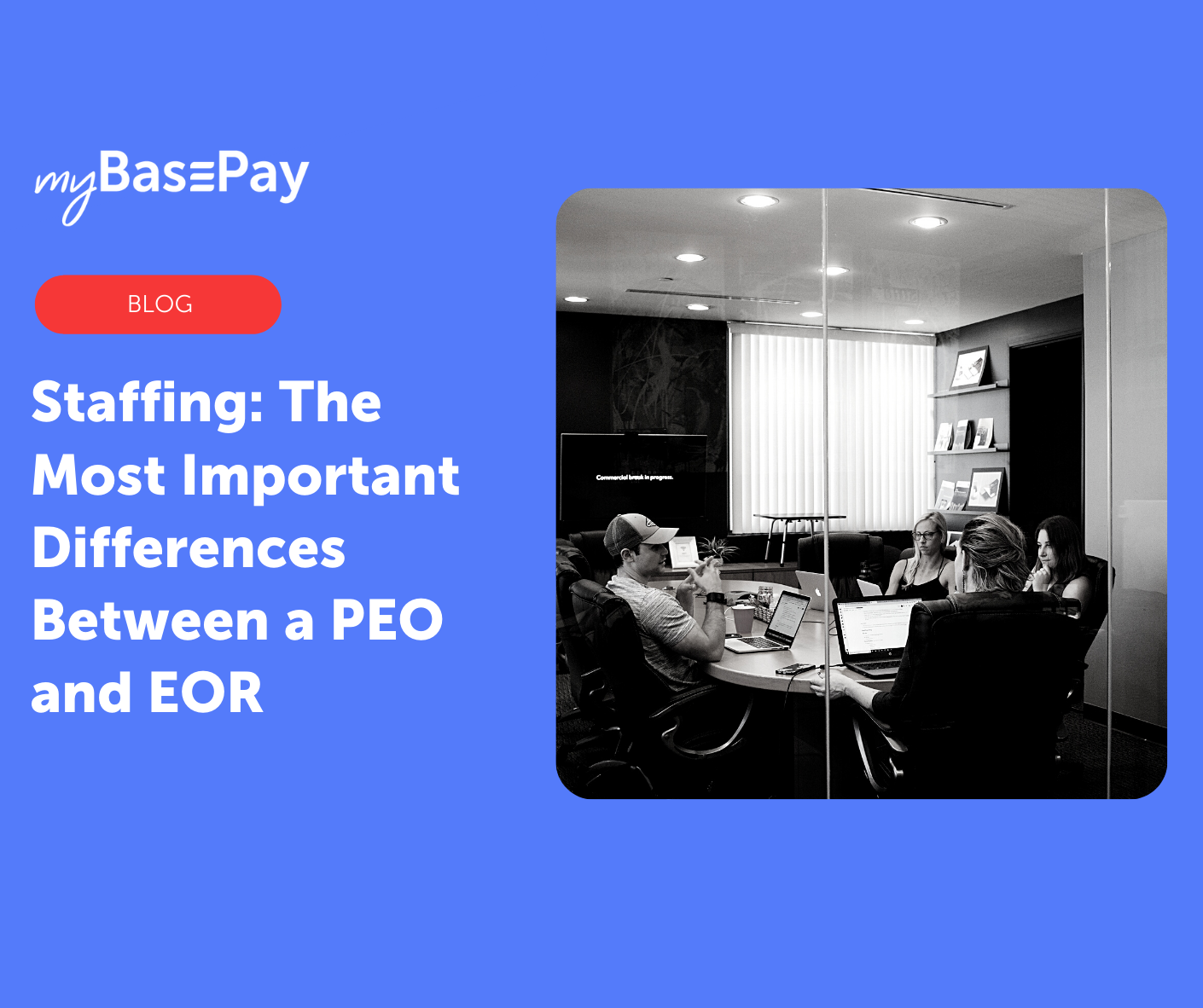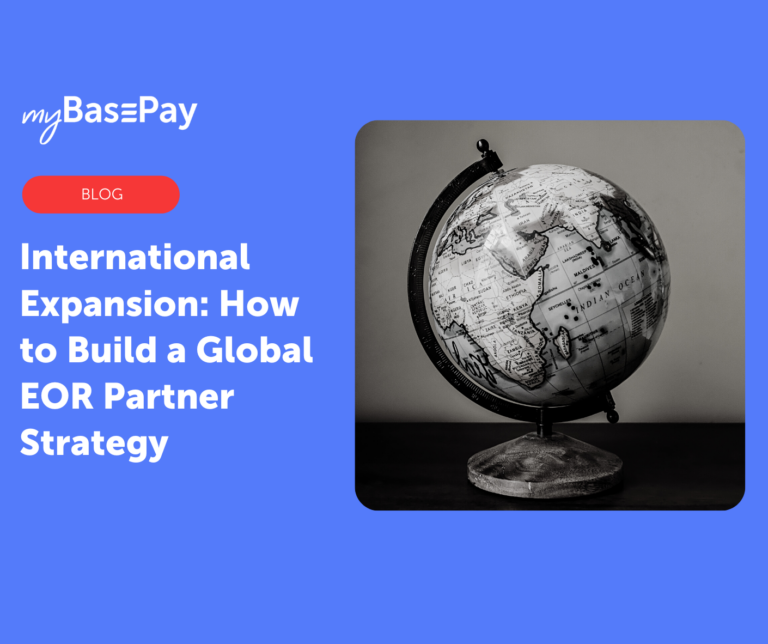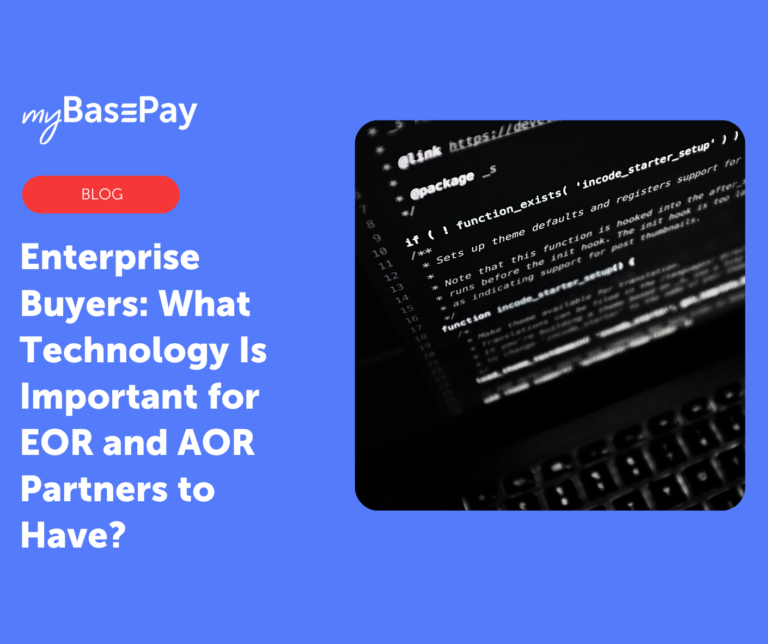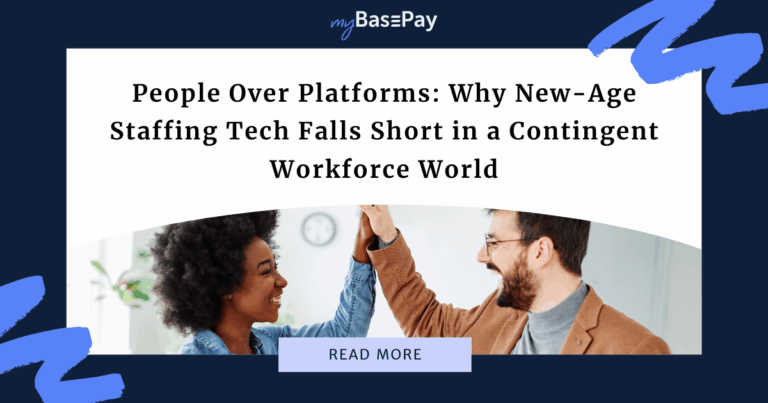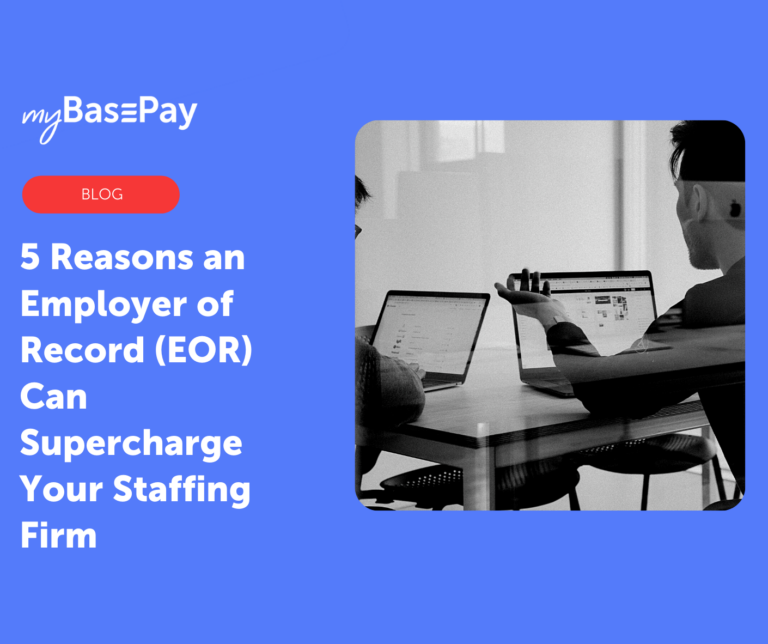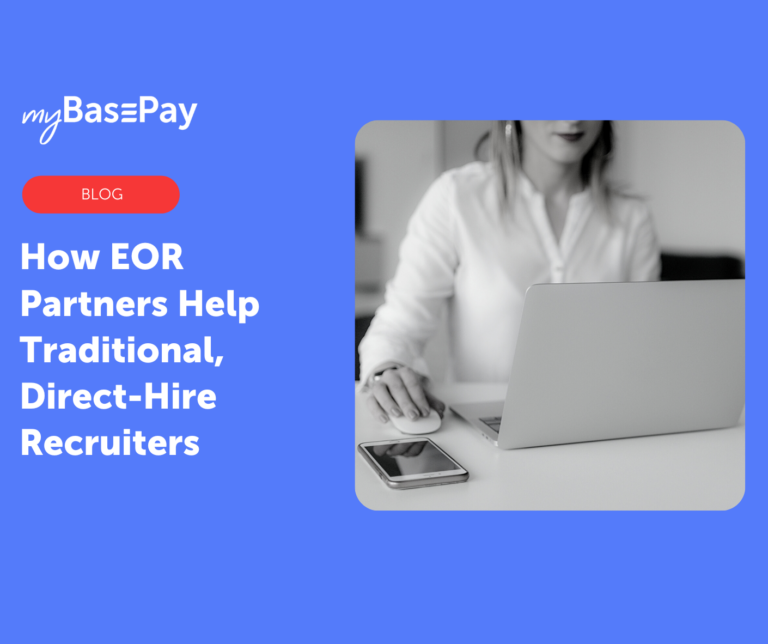Staffing: The Most Important Differences Between a PEO and EOR
As the world continues to transform to the remote work model, companies look to hire international, remote workers. However, the process is easier said than done, and the complexities involved with hiring internationally can make it difficult for businesses to do so.
Fortunately, there are outsourcing HR solutions that can help, but it’s important to understand the differences between them. PEO (professional employer organization) and EOR (employer of record) are both third-party employment agencies, but they provide different services.
Why does this matter?
Confusing the two services might initially seem like a harmless mistake, but it can actually land you into legal trouble. To avoid putting your company at risk, it’s crucial to understand the differences between PEO and EOR, so you can analyze and select which provider will be the best option for your company.
What Is the Difference Between PEO and EOR?
Though some companies might use the terms interchangeably, there are key differences between PEOs and EORs. A professional employer organization provides HR benefits to small and mid-sized businesses.
Whether that means payroll, benefits, taxes, workers’ compensation insurance, hiring, or termination, their solutions can include various services. PEOs mostly handle HR functions for businesses that already possess legal entities.
Comparatively, an employer of record does just as much as a PEO does, but with the additional option to become the official hiring agency for your company — that includes all the duties and liabilities involved with hiring, employing, and terminating workers. Their main service revolves around handling international or remote business registration on behalf of the company.
When it comes to cost, the two providers also vary. Depending on the PEO you select, you can expect to either pay a percentage of your payroll per pay period or one flat fee per employee per month. The per-employee fee can cost anywhere between $500 to $1500 per month per employee. There might also be a payroll percentage fee or a one-time setup fee.
Likewise, EORs also have fees and rates similar to PEOs, but those costs could be considerably less since EORs offer full insurance and benefit coverages — saving your company a lot of money in the long run. For small businesses that intend to stay small, an EOR might be the best option. For companies that plan to grow, a PEO offers the most ideal solutions.
The biggest difference to remember is that EORs allow you to hire in other countries without owning an entity or a co-employment status, while a PEO requires you to already own a local entity and enter into a co-employment arrangement.
Understanding Employee Minimums
It’s important to note that both PEOs and EORs often require employee minimums. The costs to open a local legal entity can quickly add up; organizations that offer such services might tell potential business clients they have an employee minimum requirement to start the partnership.
In the case of a PEO, they may want to ensure enough people are being acquired, possibly demanding a minimum of at least five, or up to 10 workers. An EOR, on the other hand, is accustomed to fluctuating workforces — particularly among businesses that prefer hiring contract, or contingent, workers. This means they are generally more willing to work with smaller-sized companies that have just a handful of full-time employees.
Particularly in small businesses, hiring contractors for short periods can cause a lot of extra work for HR departments. If you were to rely on an in-house employee, they would have to possess a sufficient understanding of the standards outlined in the Fair Labor Standards Act, and other similar employment regulations.
With an EOR, however, your company wouldn’t have to worry about taking on such burdensome tasks, since EORs are required to know these laws. Any benefits, insurance, or taxes associated with contractors, they will take responsibility for.
Owning a Legal International Business Entity
When hiring a full-time remote worker, whether or not you choose an EOR or PEO will depend on whether or not you own a legal entity in the country in which the employee(s) resides.
Unless you choose to open your own legal business entity in a foreign location, your only viable option is choosing an EOR. There is always the option to open an entity, but it can take several months, and typically costs thousands of dollars. That’s why much smaller businesses — that don’t have the necessary funds — choose to partner with an EOR.
Even for larger organizations, starting a legal entity can be a costly, time-consuming process. A company must tap into existing data analytics to determine future operation levels, and whether or not they can sustain a legal entity. If a business anticipates major growth or change, establishing a local entity might be a good option, and partnering with an EOR would be the best choice.
In the case where a business does own a legal entity, it might not have all the necessary tools and technology to fulfill its workers’ needs. When such a case occurs, the company might want to consider a PEO.
When selecting a partner, you should be aware of all the potential downsides, as well. For example, instead of doing so directly, some EOR agencies employ an additional third-party company to locate and hire remote workers. This will result in additional fees and higher rates, and the experience can become both unpleasant and expensive.
Selecting the Right Service
The choice of hiring an EOR or PEO will ultimately come down to your specific business. Factors like company goals, size, location, and level of growth will determine which agency type will fit you best.
If your goal is to expand into other states or countries or hire contingent workers over full-time employees, you might want to consider the benefits of a partnership with an EOR. If your company is focused solely on outsourcing a few HR functions, you might look into a PEO.
Much of your choice will come down to your current and future workforce strategy. PEOs and EOR have similarities, but they are not the same. Considering aspects like the number of desired employees, the type of workers you’d like to hire, and whether you require a short or long-term solution will help narrow down your search for the right partner.
Author: Cesar Jimenez, myBasePay CEO
Cesar A. Jimenez is an entrepreneur, investor, and military veteran with over 25 years of staffing industry expertise successfully leading technology staffing organizations. His expertise in the IT industry allows him to use his experience as a thought leader for talent acquisition, staffing, IT, and recruitment technologies with a passion for contingent workforce solutions. Cesar has held various leadership roles for both a global staffing organization and technology solutions companies. This expertise has enabled him to develop alternative workforce models that provide the agility for organizations to be competitive in today’s marketplace. In his spare time, he enjoys spending time with hisfamily, working out, and coaching high school baseball players.
